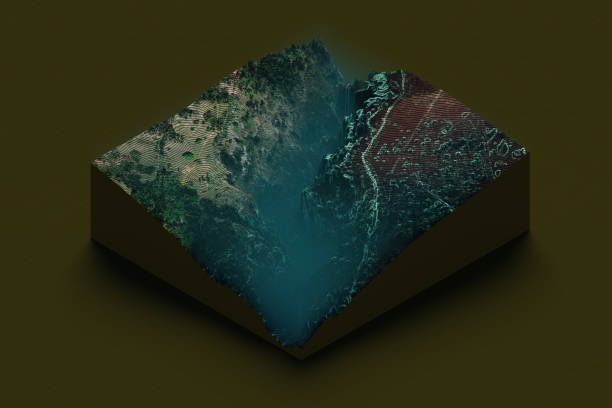On 30 July 2025, an 8.8 magnitude earthquake hit off the Eastern component of the Kamchatka Peninsula of Russia causing enormous tsunami waves in the Pacific. Whereas emergency warnings are being announced in East Asia to the Americas. People were amazed at how tame the tsunami has turned out to be. Especially in Japan, which is the nearest location to the epicenter. But why does such a monster earthquake not trigger a greater disaster in the form of a tsunami. That would cover the Pacific basin? The key to that question is found in the ground on which we stand. The motion and action of plate movements.
The Geologic Origins: Subduction at Work
The earthquake had its origin along the meeting of the Pacific Plate. And the North American Plate is a typical subduction zone. It is also in this case that the Pacific Plate is mercilessly advancing in a northwest direction. And subducing the plate extending towards Russia. This is called subduction. This has been one of the major causes of the large scale earthquakes. tsunamis that happen across the world.
According to the U.S. Geological Survey (USGS)
This boundary averagely creeps at a rate of 80 millimeters per year. which makes it one of the most active plate convergence zones on earth. But this movement does not happen gradually. It picks up stress gradually and then lets go of it in sudden earthquakes. That moves the seafloor a great deal in just seconds.
What Causes a Tsunami?
During the occurrence of earthquakes underneath the ocean. When the seabed is raised or lowered. Tsunami waves are created. Upon a vertical motion the tremendous quantities of water. That is displaced then causes waves to race across. The sea at upwards of 700 kilometers (440 miles) per hour. Why not visualize this A 1 meter rise at 200 kilometres by 100 kilometres of ocean (which is 1 kilometer deep). And it would be able to cover as much water as it would fill Wembley stadium 17.5million times. This expelled water comes out so fast. It causes waves which go over large distances. Bouncing along with tides, currents and sea bottom features along the way.
Why Were the Waves Smaller This Time?
Although the Kamchatka quake was huge waves of the tsunami. There are many areas where it is less than expected especially. In Japan and parts of the West Coast of the U.S. This was the case because of a number of reasons:
Earthquake Depth Depth of the Earthquake
The quake was of a depth of 20.7 kilometers which is a little deeper. Then a couple of the worst tsunamis in recent history. Such as the 2004 Indian Ocean tsunami and the 2011 Japan earthquake. The further the earthquakes are, the smaller. They are likely to be accompanied by the abrupt vertical movement of the seabed. The more dramatic and violent the movement is the more water. It displaces the greater the tsunami.
Type of the Sea-floor Movement
The strength of a tsunami depends on the shape and position of the rupture zone as well. What has happened in this case is that the movement may have been extended over a wider region. That it may have taken place over an extended time. And this would result in minimizing vertical uplift. The strong waves are usually generated due to the rapid jagging movement of the earth beneath the sea.
Dispersion of energy over the Pacific
Tsunami waves dissipate during their propagation particularly. In traversing the entire oceans basins. Though the waves traveled fast in the Pacific Ocean. Their strength got weaker as it travelled. Thus when the waves hit the shores of Hawaii, California andChile. They were highly weakened and not too threatening.
Geometry and Shape of the Coastline and Seafloor Geometry
The slope of the seabed and the shape of the coasts. It makes a drastic difference in the behavior of the tsunami on land. With the use of gentle slopes, the energy is able to dissipate at a slower rate.Also. And harbors can focus (or diffuse) the energy by their design.
Learning the Meaning of the Tsunami Warnings and its Revisions
Due to the earthquake, tsunami alerts and evacuation notifications were immediately made in several countries. Most of these have been downgraded or canceled later in many regions. This has led to concerns regarding the validity of the forecasts.
It should be remembered that such alerts are preventative. When a quake of as high as 8.8 takes place beneath the ocean. It is more advisable to embark on comprehensive warnings even before. The actual strike is lower than the projection of the event. Tsunami forecasting relies on rapid interpretation of seismic data. Sea level sensors and modelling but the precise way. In which the waves will behave depends on too many factors. That cannot easily be assessed in real time.
What Was the Kamchatka Story?
Other regions of the Pacific experienced relative calm except coastal regions around Kamchatka Peninsula. It saw up to four-meter high waves. That left a trail of localized destruction as well. These communities being so near to the epicenter experienced most of the initial energy of the tsunami. Since the waves had not gone very far to dissipate its energy before the land contact. Such an uneven distribution of wave height is characteristic of tsunamis. That usually devastates closer areas more than. It goes to far-field areas across the ocean.
tsunami. When there is a quake, the scientists:
- Determine the magnitude, magnitude of quake and place.
- To have real time sea level measurement to assess. Whether displacement of water has taken place.
- There are computer models that act as simulations of the route the waves take.
- Send out issues update alerts on the basis of this changing information.
- This is a quick response system, however since undersea earthquakes are complicated. There is an air of doubt- just like that is why the safety first commandments are vital.
Lessons of the Kamchatka Quake
It is an example of human vulnerability that we are reminded of. This recent occurrence when we learn the strength of natural forces. As well as the necessity of scientific decoding. Thousands of miles of earthquakes are not always an indication of an ugly tsunami and seeing.
Why do you need to think deeper about the numbers?
In this situation the more gentle fall of the ocean floor. A more significant quake, and the spreading of the energy moving. The waves together served to avoid the situation. That has been a much more devastating option for a lot of the people residing in the Pacific.
Conclusion
Geological science does not only allow people to learn about the past. But it also helps to save lives nowadays. The more we are able to come up with superior models and predictive systems. Regarding earthquakes and tsunamis, the better we can respond intelligently. As well as proportionately to these disasters. The Kamchatka earthquake of 2025 shows. The accuracy of predictability of the geological phenomenon. As well as the instability of the dynamic systems of the planet. This aspect of research and planning can be used to further mitigate. The effects of such natural occurrences. That occurs even when there is little indication. That their occurrence is imminent.








